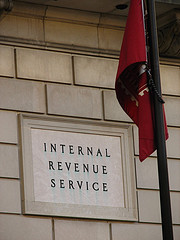Simple Tip For Spending Less – Think About Pre-Tax Dollars
 A simple tip that I came across while reading The Quiet Millionaire is to frame your spending in pre-tax dollars rather than after tax dollars. Assuming a 33% tax bracket(actual tax rate of about 25%), you need to earn $1.33 for every dollar you spend. So that $1.00 you spent in the vending machine for a soda, actually cost you $1.33.
A simple tip that I came across while reading The Quiet Millionaire is to frame your spending in pre-tax dollars rather than after tax dollars. Assuming a 33% tax bracket(actual tax rate of about 25%), you need to earn $1.33 for every dollar you spend. So that $1.00 you spent in the vending machine for a soda, actually cost you $1.33.
Thinking in pre tax dollars doesn’t have as big of an impact when the purchase is small, but as the purchase amount increases so does the impact. It takes another hour or two of work to cover the $33 dollars of federal tax on the $100 grocery bill. Now if we talk about a $10,000 used car that is another full month of work($3,300)! A $25,000 new car actually costs us about $35,500 dollars. The problem exacerbates if we talk about buying something on credit; pre-tax dollars for the purchase and for the interest.
What this simple trick helps us do is clarify our needs vs. our wants for the given product. Is a used car worth an extra month of work? Maybe a $4,000 car would be just as good. Next time you have a larger purchase like a couch, house remodel, or a car think about how much you would need in pre tax dollars to cover the full expense. Taxes can actually save you money!
Related Info: IRS Tax Bracket Info


The same logic in reverse is a good trick to convince yourself that saving using a tax-deferred instrument such as 401K and IRAs are good – for a 33% tax bracket, $100 invested in a 401K is just $67 after taxes.
Regards,
OneFamilysBlog@gmail.com
http://OneFamilysBlog.blogspot.com
Surely you’ve got the calculations wrong here. If you $100 after paying 33% tax then you had $150 to start with – good tip but it’s worse than you thought!
Good point One Family, although Roth definitely have there place too.
Dec, because of the way tax brackets in the US work you don’t actually pay 33% income tax on all of your money, just the portion over some set amount. Our actual tax percentage paid is much less than our tax bracket. I added in the assumption of a 25% actual tax bracket, to hopefully make it a little more clear. I think the $133 for groceries is correct, but your questioning made me correct the new car calculation from $37,000 to $33.500. Thanks for the help! Maybe I will make a after tax calculator to make it a little simpler.
Ouch. I had thought some of that before, but not so clearly.
Then again, I’ve also worked very hard to think of my salary in terms of take-home, not pre-tax. That way I don’t get fancy notions about what I can afford.
But if I’m doing the “it would take me x number of hours to earn this,” this formula would be appropraite. If, on the other hand, I’m thinking in terms of weeks or months, I already have those numbers. :-/
Good advice, certainly makes you think every time you splurge, even on the small things. Another tip is always save your change when you spend (when you spend cash obviously)